Fan Environment

Can you provide examples of successful fan support campaigns for different artists ?
Successful fan support campaigns for various artists have been instrumental in promoting their work and achieving their goals. Examples include Taylor Swift's "1989" world tour, Beyoncé's "Lemonade" release, and BTS's "Love Myself" anti-violence and anti-bullying campaign. These campaigns engaged fans through social media, exclusive content, and community building, resulting in increased album sales, critical acclaim, and positive change.
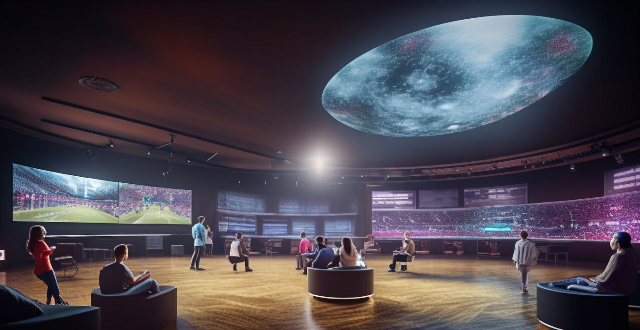
How has augmented reality transformed fan engagement in sports ?
Augmented Reality (AR) is revolutionizing fan engagement in sports by offering immersive experiences that blend physical and digital elements. AR enhances viewing experiences with interactive overlays and virtual seats, enables in-game interaction through team and player interaction and game day activities, boosts merchandise and sponsorship opportunities with interactive ads and virtual try-ons, aids navigation and wayfinding in stadiums, and encourages social sharing through augmented selfies and virtual reality social spaces. These advancements are transforming the way fans connect with sports and teams, creating more engaging and interactive experiences.

How do fan support events differ between music genres or cultures ?
The text discusses the variations in fan support events across different music genres and cultures. It highlights how these events differ in terms of concert tours, meet and greets, signings, fan clubs, and online communities. The examples provided illustrate the unique traditions and practices associated with each genre or culture, showing how artists connect with their audiences in diverse ways.

How can a sports stadium be designed to enhance fan engagement and experience ?
Designing a sports stadium to enhance fan engagement and experience requires careful consideration of various factors. These include seating arrangements, technology integration, amenities, and more. Key strategies for designing an engaging stadium involve creating premium seating options near the field, ensuring good viewing angles, providing comfortable seating, offering strong Wi-Fi connectivity, developing mobile apps, installing large screen displays, integrating interactive features, offering a variety of food and beverage options, ensuring ample restroom facilities, creating merchandise stores, designating family-friendly areas, using music and lighting effects to create an energetic atmosphere, encouraging fan interaction through contests and giveaways, and planning themed events around holidays or special occasions. By prioritizing these factors, you can ensure that your sports stadium becomes a destination for sports enthusiasts seeking an exceptional experience.

How do fan support events impact an artist's success and popularity ?
Fan support events play a crucial role in shaping an artist's success and popularity by increasing visibility, strengthening fan loyalty, providing monetization opportunities, and enhancing reputation and credibility. These events offer platforms for fans to connect with artists, generate media coverage, create social media buzz, foster personal connections, offer exclusive experiences, sell merchandise, increase ticket sales, gain industry recognition, and influence critic opinions. Overall, fan support events are essential components of an artist's career development strategy.

What are the most common types of fan support activities for musicians ?
Musicians depend on various fan support activities to build their careers, including attending concerts, streaming music, following on social media, participating in online communities, writing reviews, creating fan art, and organizing fundraising campaigns. These activities help generate income, increase exposure, strengthen connections with fans, and provide valuable feedback and support for musicians' endeavors.

What are some creative ways to organize a fan support event ?
Organizing a fan support event can be a fun and creative way to engage with your audience and create a sense of community around your brand or organization. Here are some creative ways to organize a fan support event: 1. Hosting themed parties, such as costume contests or trivia nights. 2. Organizing virtual events where fans can participate from home, such as live streaming the event on social media platforms or creating interactive experiences. 3. Collaborating with other brands or organizations to expand your reach and create unique experiences for fans. 4. Hosting contests and giveaways to engage fans and create excitement around your event. 5. Personalizing the event experience for fans, such as offering personalized merchandise or creating custom-made content featuring fans' names. 6. Creating interactive installations or exhibits related to your brand or organization. 7. Involving the local community in your fan support event to create a sense of belonging and connection among fans.
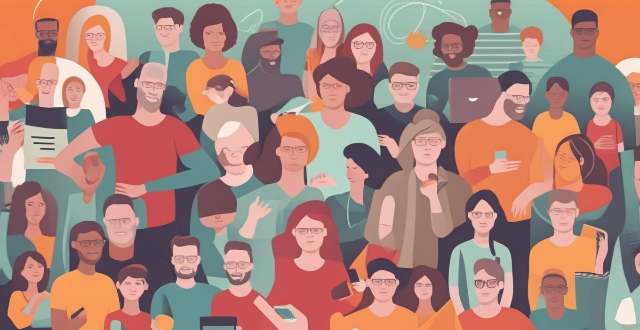
What role does social media play in organizing and promoting fan support events ?
Social media is a crucial tool for organizing and promoting fan support events, connecting fans, promoting events, engaging fans, and measuring success. It allows fans to form online communities dedicated to their favorite artists or sports teams, share news, updates, and information about upcoming events. Artists, sports teams, and event organizers can use social media to announce upcoming events, share details about the event, and encourage fans to attend. Social media also provides opportunities for fans to engage with their favorite artists or sports teams in meaningful ways, such as participating in contests and giveaways or sharing user-generated content related to the event. Finally, social media provides valuable data that can be used to measure the success of fan support events by tracking metrics such as likes, shares, comments, and reach.
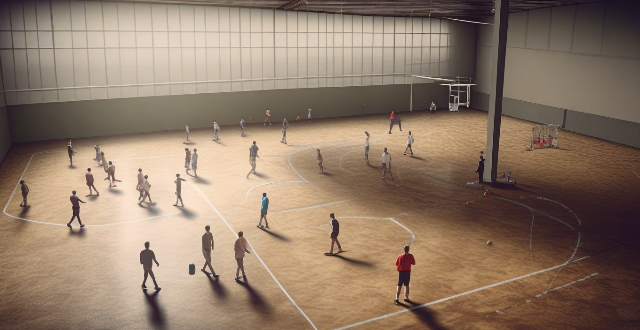
Does sports sponsorship have an impact on the fan engagement and loyalty towards a team or event ?
The influence of sports sponsorship on fan engagement and loyalty is multifaceted, with potential positive impacts such as enhanced brand visibility, improved attendance and viewership, and community involvement. However, there are also potential negative effects like overcommercialization concerns and misaligned brand values. The impact can vary based on factors including team performance and fan demographics.

In what ways can AI enhance the fan experience at sporting events ?
AI is enhancing the fan experience at sporting events by offering personalized, interactive, secure, and accessible experiences. It can create customized highlights, provide real-time analytics, offer immersive VR/AR experiences, power interactive apps, enhance security through facial recognition and crowd management, and improve accessibility with live captioning, translation, and visualization tools for blind fans. These advancements are making sports more enjoyable and safer for fans worldwide.

How does the media influence the perception of different sports and their respective fan bases ?
The media significantly impacts sports perception and fan bases by focusing on popular sports, creating celebrity athletes, promoting major events, fostering online communities, and shaping public opinion. This influences how people engage with and view various sports.
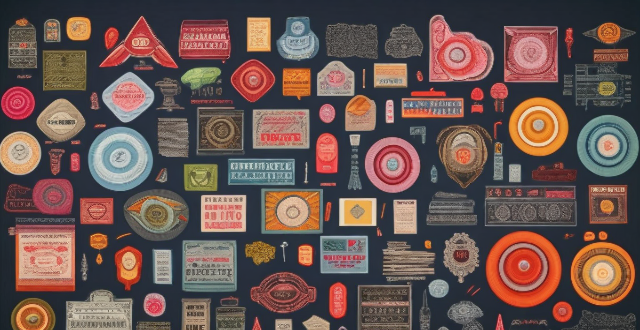
What are the benefits and drawbacks of virtual fan support events compared to in-person events ?
Virtual fan support events provide global accessibility, cost-Virtual fan support events provide global accessibility, cost- benefits but face challenges like limited cost-effectiveness, and safety benefits but face challenges like limited personal interaction and technical issues. Finding a balance between virtual and in-person events is crucial for meaningful connections.
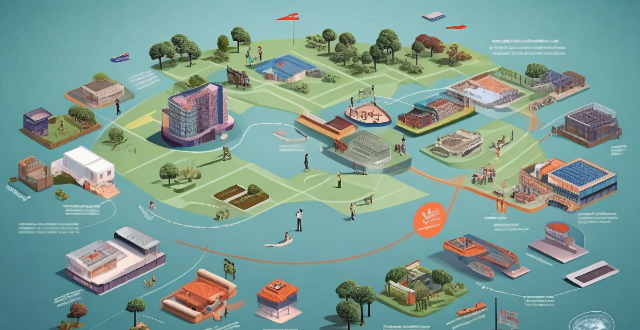
How does the globalization of sports media affect fan engagement and consumption patterns ?
The globalization of sports media has significantly impacted fan engagement and consumption patterns. Enhanced accessibility through live streaming, on-demand content, and digital platforms has revolutionized how fans watch and interact with sports. Diverse content offerings, including international coverage and multilingual broadcasts, have expanded the reach of sports to global audiences. Personalized experiences through customized content and fantasy sports have increased fan engagement. Additionally, virtual events, e-sports, and online tournaments provide new opportunities for fans to participate and engage. Changes in consumption patterns, such as a shift towards digital subscription models and online merchandise shopping, reflect the evolving landscape of sports media. Overall, the globalization of sports media has transformed the way fans consume and enjoy sports worldwide.

How do human activities impact the environment and what ethical responsibilities do we have ?
Summary: Human activities such as pollution, deforestation, overfishing, and climate change have a significant negative impact on the environment. To fulfill our ethical responsibility towards the environment, we should reduce, reuse, recycle, support sustainable practices, advocate for environmental protection, and educate others about the importance of preserving the planet for future generations.

How does a Series Hybrid Electric Vehicle impact the environment ?
Series hybrid electric vehicles (SHEVs) have a positive impact on the environment through reduced emissions and improved fuel efficiency. However, challenges such as battery production and waste management must be addressed to maximize their environmental benefits. The overall impact also depends on factors like the source of electricity for charging and vehicle design efficiency.

How can I increase viewer interaction in my online broadcasts ?
Increasing viewer interaction is crucial for online broadcasters to build a loyal fan base and improve engagement. Strategies include engaging with the audience through live chat, polls, and Q&A sessions; incorporating interactive games, collaborations, and guest appearances; using visually appealing graphics and custom overlays; building a community through fan groups and contests; and encouraging viewer participation by showcasing their content.

How can fans get involved in their favorite celebrity's charity work ?
Fan involvement in a favorite celebrity's charity work can take many forms, from direct donations to volunteering time and skills, spreading awareness, participating in challenges, collaborative projects, and staying updated on the charity's activities. These actions not only support the causes championed by celebrities but also foster a deeper connection between fans and the stars they admire.
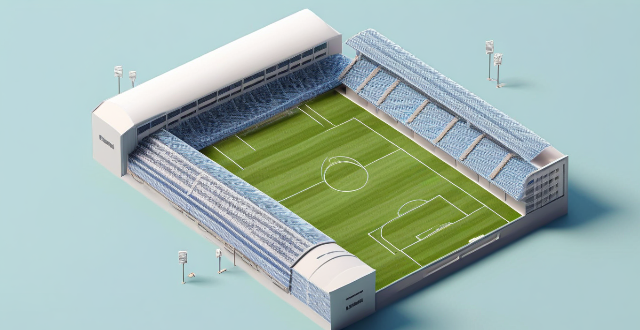
What role does technology play in the design of a sports stadium ?
Technology has revolutionized the design of sports stadiums, enhancing fan experience with interactive displays, mobile apps, and augmented reality. It also improves functionality and safety through advanced lighting systems, security cameras, and smart building management systems. As technology evolves, we can expect more innovative solutions that will further transform the way we enjoy sports events.
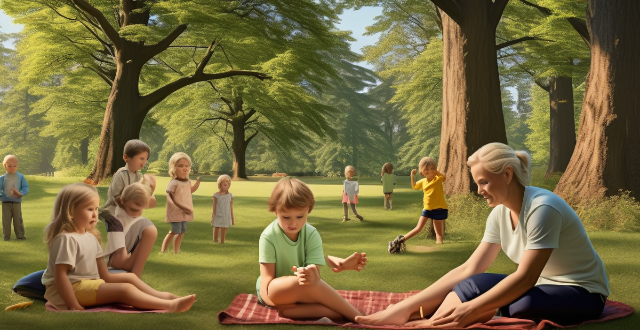
How does climate change affect children's rights to a healthy environment ?
This article explores the impact of climate change on children's right to a healthy environment, highlighting various health, nutritional, psychological, and educational implications. It emphasizes that addressing climate change is crucial for safeguarding children's rights and future well-being.

What are some innovative features that can be included in modern sports stadium design ?
Innovative features in modern sports stadium design include sustainable construction, advanced technology, enhanced fan experience, safety and security measures, flexible design, and environmentally conscious facilities. These features aim to improve the fan experience, increase sustainability, and ensure the safety of attendees.

How does electronic waste affect the environment if not recycled ?
Electronic waste, or e-waste, refers to discarded electronic devices such as computers, smartphones, and televisions. Improper disposal of these items can have severe consequences for the environment, including the release of toxic chemicals into soil, water, and air. These chemicals can cause health problems for both humans and wildlife. Non-recycled e-waste also occupies valuable landfill space and contributes to soil contamination, water pollution, and air pollution. Proper recycling of electronic waste is essential to protect the environment and human health, conserve natural resources, and minimize the impact on landfills.

How can I create an environment that encourages creative expression ?
Creating an environment that encourages creative expression is essential for fostering innovation, personal growth, and problem-solving skills. Here are some tips on how to create such an environment: 1. Set the tone by making everyone feel comfortable sharing their ideas and opinions without fear of judgment or criticism. 2. Provide opportunities for self-expression through various forms of media, such as writing, drawing, music, or dance. 3. Foster collaboration by encouraging teamwork and brainstorming sessions where everyone feels valued and heard. 4. Create a safe space where people feel comfortable taking risks and making mistakes. 5. Offer incentives and recognition to motivate individuals to continue exploring their imagination. 6. Provide resources and tools that support creative expression, such as art supplies, software, or access to workshops and training programs. 7. Encourage time for reflection and inspiration by providing regular breaks, mindfulness exercises, or a quiet space for contemplation. 8. Promote diversity and inclusion to encourage different perspectives and ideas, leading to more creative solutions.

What is the optimal environment for studying effectively at home ?
The provided text offers a comprehensive guide on creating an optimal study environment at home. It emphasizes the importance of choosing a quiet area with comfortable seating and adequate lighting. The text suggests keeping the study area clean, clutter-free, and properly organized with essential materials within reach. It also recommends minimizing distractions by controlling electronics, using do not disturb signs, and scheduling short breaks. Personalizing the space with motivational decor, personal touches, and maintaining a comfortable temperature is also advised. Overall, the text aims to help readers create a conducive study environment that enhances focus and productivity.

How does PPE contribute to creating a safe work environment ?
PPE's Role in Creating a Safe Work Environment Personal Protective Equipment (PPE) is vital for establishing a safe work environment by providing a physical barrier between workers and potential hazards, reducing the risk of injuries and illnesses. PPE contributes to safety in various ways, including preventing direct contact with hazardous substances, reducing exposure to harmful agents, providing physical support and protection, enhancing visibility and awareness, promoting compliance with regulations, encouraging responsible behavior, and contributing to ergonomic well-being. By implementing and maintaining the use of PPE, employers can significantly reduce the number of work-related injuries and illnesses, creating a safer and more secure work environment for all employees.

What are some innovative ways that technology is being used in sports ?
Technology has significantly transformed various aspects of sports, including training methods, fan engagement, and game strategies. Key areas where technology is making a notable impact include virtual and augmented reality for both training and enhancing the fan experience, wearable technology for performance tracking and injury prevention, advanced analytics in player performance analysis and game strategy, video technology like instant replay and drone cameras for improved officiating and viewing experiences, eSports and gaming for interactive experiences and training simulations, social media and digital engagement for athlete interaction and live streaming, artificial intelligence in generating match highlights and aiding injury rehabilitation, and the Internet of Things in creating smart stadiums and monitoring equipment maintenance. These advancements not only improve performance but also enrich the overall sports experience for everyone involved.

How can parents create a positive learning environment through home teaching strategies ?
Creating a positive learning environment at home is crucial for children's academic success and overall well-being. Here are some strategies parents can use to foster such an atmosphere: 1. Establish a dedicated learning space that is quiet, organized, and comfortable. 2. Set clear expectations and goals with your child, and celebrate their achievements to boost confidence and motivation. 3. Foster a love for learning by encouraging curiosity, introducing new materials, and leading by example. 4. Provide support and encouragement by offering help when needed, praising effort over outcomes, and fostering a growth mindset. By implementing these strategies, parents can create a positive learning environment that encourages curiosity, exploration, and continuous growth for their children.
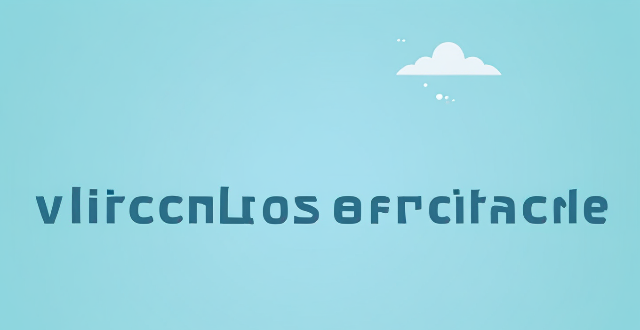
Is it ethical to continue using fossil fuels given their negative impact on the environment ?
The text discusses the ethical implications of continuing to use fossil fuels given their negative impact on the environment. It highlights the harmful pollutants released by burning fossil fuels, including carbon dioxide, sulfur dioxide, nitrogen oxides, and particulate matter. These pollutants contribute to global warming, acid rain, and air pollution, which have negative effects on human health, biodiversity, and the environment. The text suggests that we have a moral obligation to protect the environment for future generations and raises questions about environmental justice and equity. However, some argue that transitioning away from fossil fuels would be too costly and disruptive to economies around the world. The text also explores alternatives to fossil fuels, such as solar power, wind power, hydropower, geothermal energy, and biomass. In conclusion, the text argues that it is ethically questionable to continue using fossil fuels as our primary source of energy and that we should focus on developing and implementing cleaner, renewable sources of energy to mitigate our impact on the environment.

How can fans ensure their support event is safe and respectful towards the artist and other fans ?
Attending an artist's performance should be a memorable and enjoyable experience for both the fans and the artist. Here are some guidelines for ensuring a safe and respectful environment: 1. Respect personal space and be mindful of your movements, especially in crowded areas. 2. Avoid harassment towards the artist or other fans, and report any incidents to venue security. 3. Follow the venue's rules and regulations, and avoid bringing prohibited items into the venue. 4. Maintain order by keeping aisles and exits clear and avoiding throwing objects onto the stage or at other fans. 5. Express support for the artist appropriately, without disturbing others or blocking their views. 6. Be considerate of noise levels and clean up after yourself to keep the venue clean for everyone. 7. Share your experiences online in a positive light and provide constructive feedback through appropriate channels. By following these guidelines, fans can help create a welcoming and secure environment that allows everyone to fully enjoy the artist's performance while showing respect for their hard work and dedication.